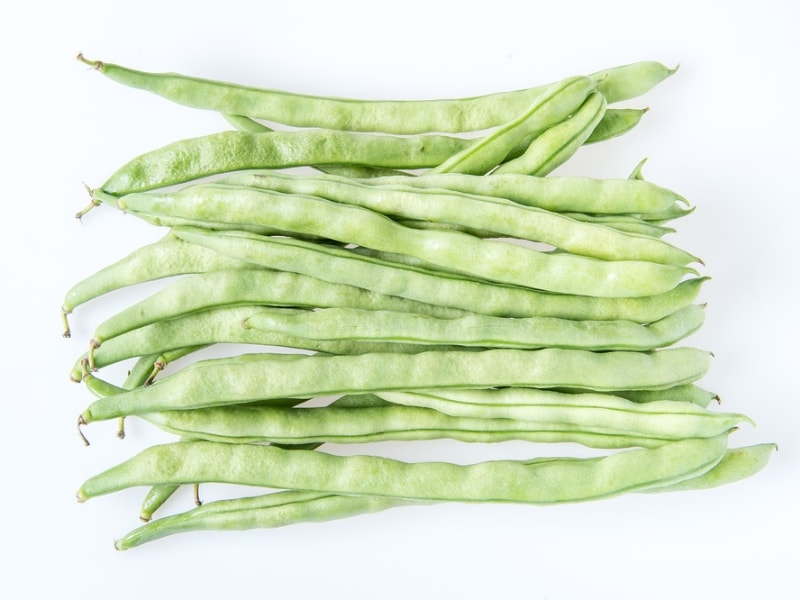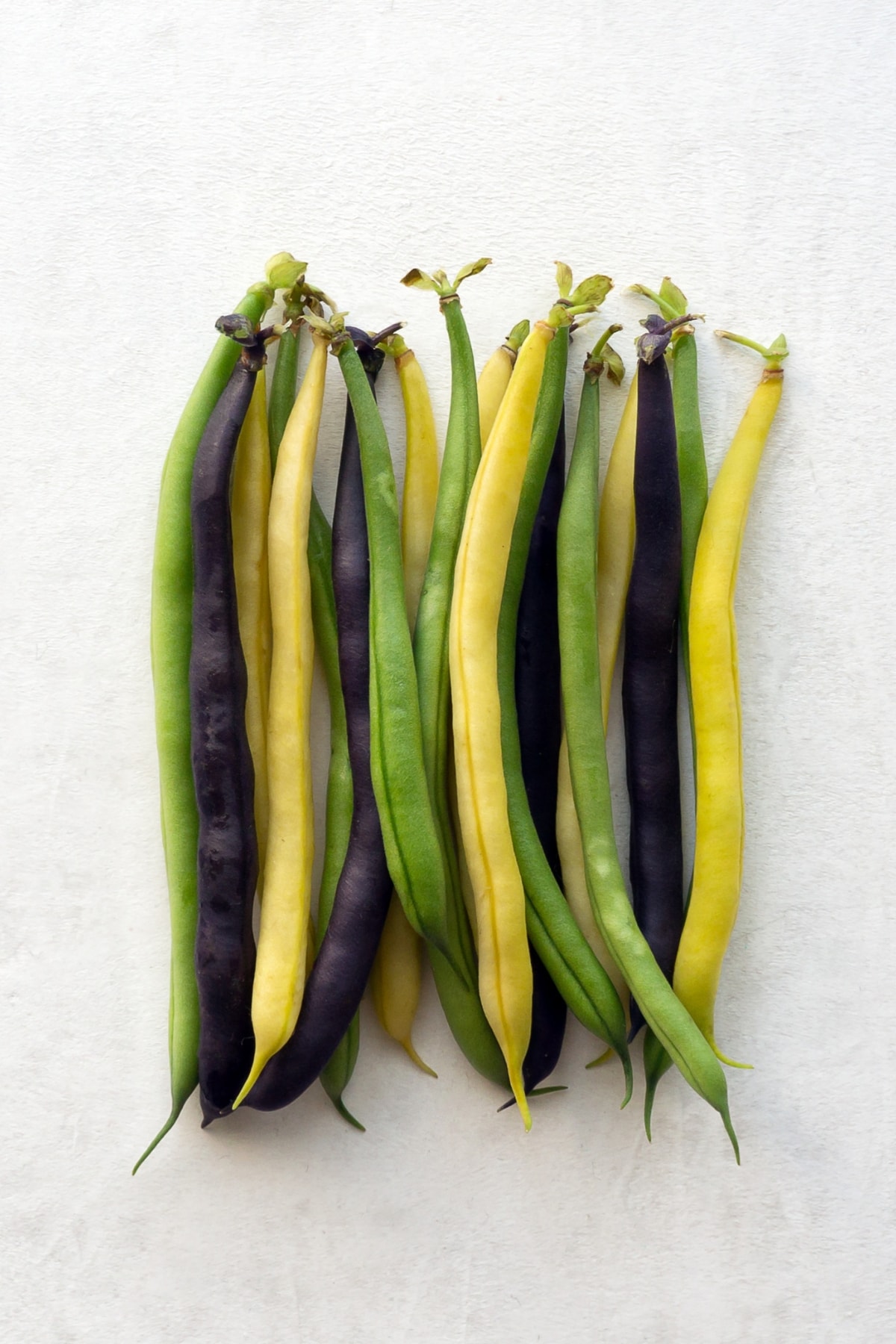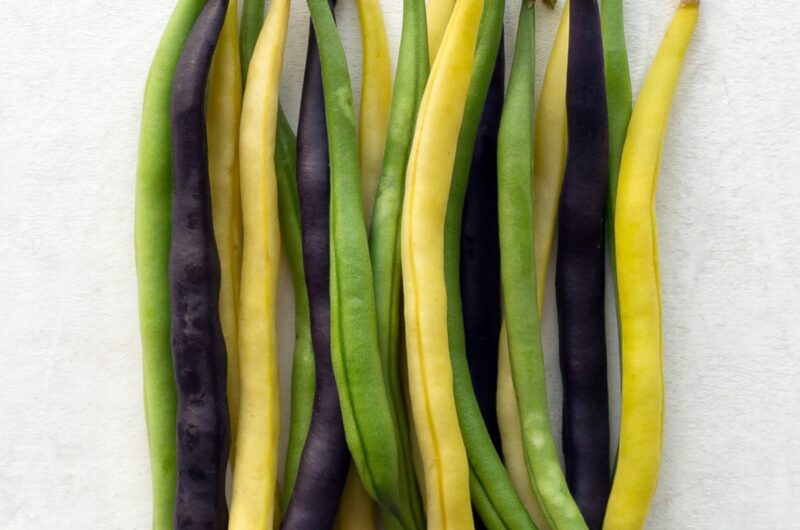The most popular types of green beans include string beans, asparagus beans, and wax beans.
Romano green beans and French green beans (haricots verts) are also some common varieties people like to eat.

It doesn’t matter if you’re cooking for yourself or entertaining guests. Green beans are an easy, healthy, affordable side dish.
Learning more about them will help you narrow down which type will best suit your needs. They all offer a delicious experience!
Types of Green Beans
1. Green Beans (String Beans or Snap Beans)

String beans, or snap beans, are versatile vegetables. They can be found in any grocery store or farmer’s market.
They’re long and slender, with a crisp texture and a bright green color. They look stunning on any plate.
When cooked, string beans have a slightly sweet and nutty flavor. They complement almost any dish.
They can be boiled, steamed, sautéed, roasted, or stir-fried.
2. Long Beans (Yard-Long Beans or Asparagus Beans)

Long beans are a slender and elongated variety of green beans. And they can grow up to a foot in length!
With their long and narrow shape, they resemble a cross between a green bean and a piece of asparagus. But looks aren’t everything. The taste of these beans is just as impressive. They have a slightly nuttier and richer flavor compared to traditional green beans.
They also have a crisp and juicy texture, making them a true delight to eat.
3. Purple String Beans

Move over, ordinary green beans, and make way for purple string beans! These beauties are a sight to behold with their vivid purple color.
Despite their name, these beans are actually green when cooked. They have a tender yet crisp texture.
The flavor is milder compared to regular green beans. They’re the perfect ingredient for adding texture and color to salads or stir-fry recipes.
4. Wax Beans

Wax beans are a unique variety of green beans. They feature a bright, yellow color. They have a slightly thicker and waxier texture than traditional green beans. Their mild, sweet flavor complements a variety of dishes.
Wax beans can be enjoyed raw or cooked. Lightly steaming or blanching them will help to retain their vibrant hue and crisp texture.
5. Romano Beans (Italian Green Beans or Flat Beans)

These elongated beans are larger and flatter than typical green beans. They have a bright green color that’ll catch your eye.
When it comes to taste, they’re slightly nutty and sweet. They also have a meatier texture than their thinner counterparts.
They’re delicious simply roasted with olive oil, salt, and pepper.
6. French Green Beans (Haricots Verts or Filet Beans)

These slender and delicate beans are longer and thinner than standard green beans.
When it comes to taste, French green beans, or haricots verts, are mild and sweet. I love their crisp texture and tender bite.
They work perfectly in salads, steamed as a side dish, or sautéed with garlic and onions.
7. Blue Lake

These beans have a vibrant greenish-bluish color and a thin but sturdy texture.
They’re longer than most green beans. They’re perfect for stir-fries, casseroles, salads, and much more.
Blue lake green beans have a tender and crispy texture and a mildly sweet flavor. They’re ideal if you prefer a less bitter taste than other green bean varieties.
8. Tendergreen

These beans are slender and usually about four inches long, with a bright green color. When cooked, tendergreen beans maintain their crispness and offer a delicious snap with every bite.
When shopping for tendergreen beans, look for glossy pods without blemishes or discoloration. That way, you know they’re fresh, crispy, and yummy.
9. Kentucky Wonder

This variety of green beans is popular among home gardeners and farmers alike.
The flavor is mild and sweet, with a subtle nuttiness. The taste pairs well with a variety of different seasonings
10. Contender

Contender green beans truly stand out from the rest. When properly cooked, they have a tender crunch. They bring a burst of freshness to any dish.
You can steam, broil, roast, or grill them. The options are endless!
Bush Beans vs. Pole Beans
Bush beans and pole beans are two types of common green beans. Though they look similar, there are some key differences between them.
Bush beans have a shorter growing season than pole beans. They’re easier for beginner gardeners to manage. They also take up less space since the plants are short. So they don’t require support like poles or trellises.
Pole beans yield more beans per plant. So if you’re looking for a bigger harvest, they’re the better option.
The taste of both bush and pole beans is mild and slightly sweet. However, pole beans are more tender and juicy than bush beans.
When it comes to cooking, the two types of beans are usually interchangeable in recipes. But most gardeners agree pole beans have a better texture when cooked.
Overall, both bush and pole beans offer their own set of advantages depending on what you’re looking for.
If you’re just starting out gardening or don’t have much space, bush beans are the best option. But if you want a bigger harvest and a juicier texture, pole beans are your best bet.
Whichever type of bean you choose to grow in your garden, be sure to enjoy every delicious bite!











